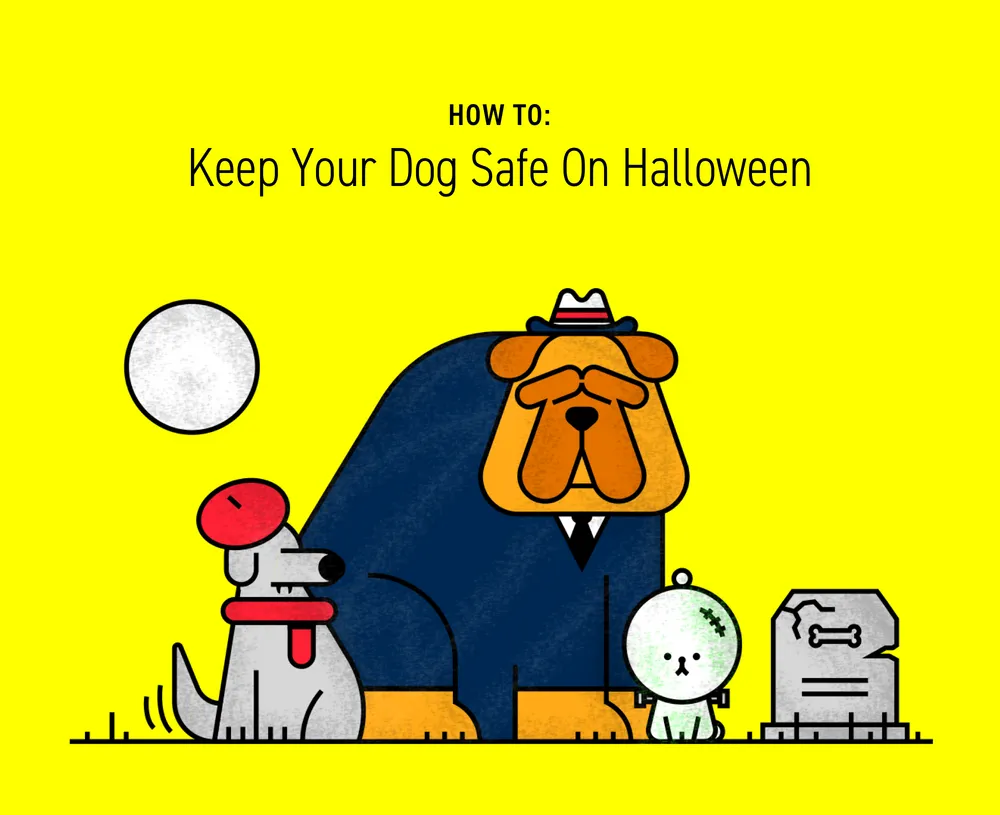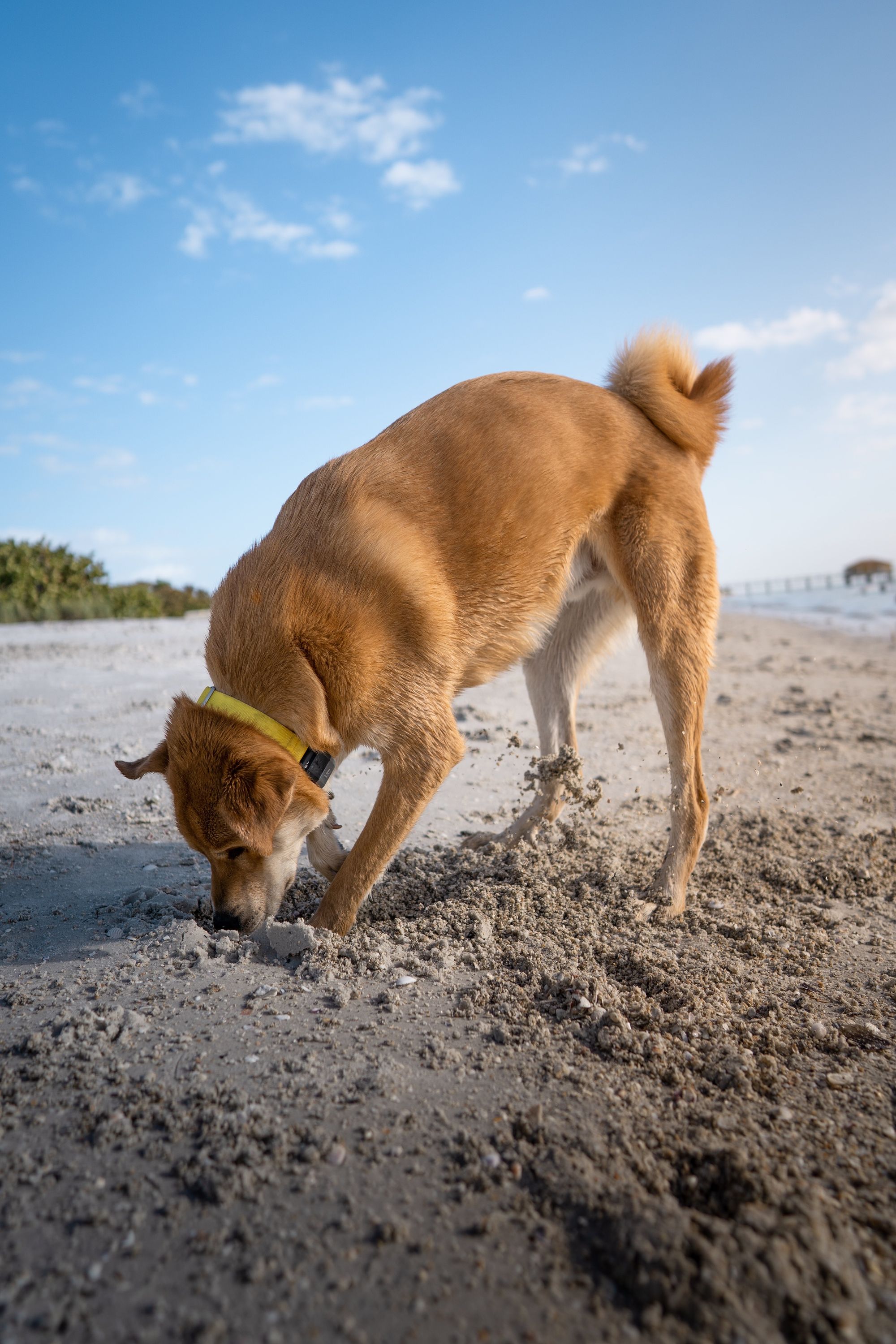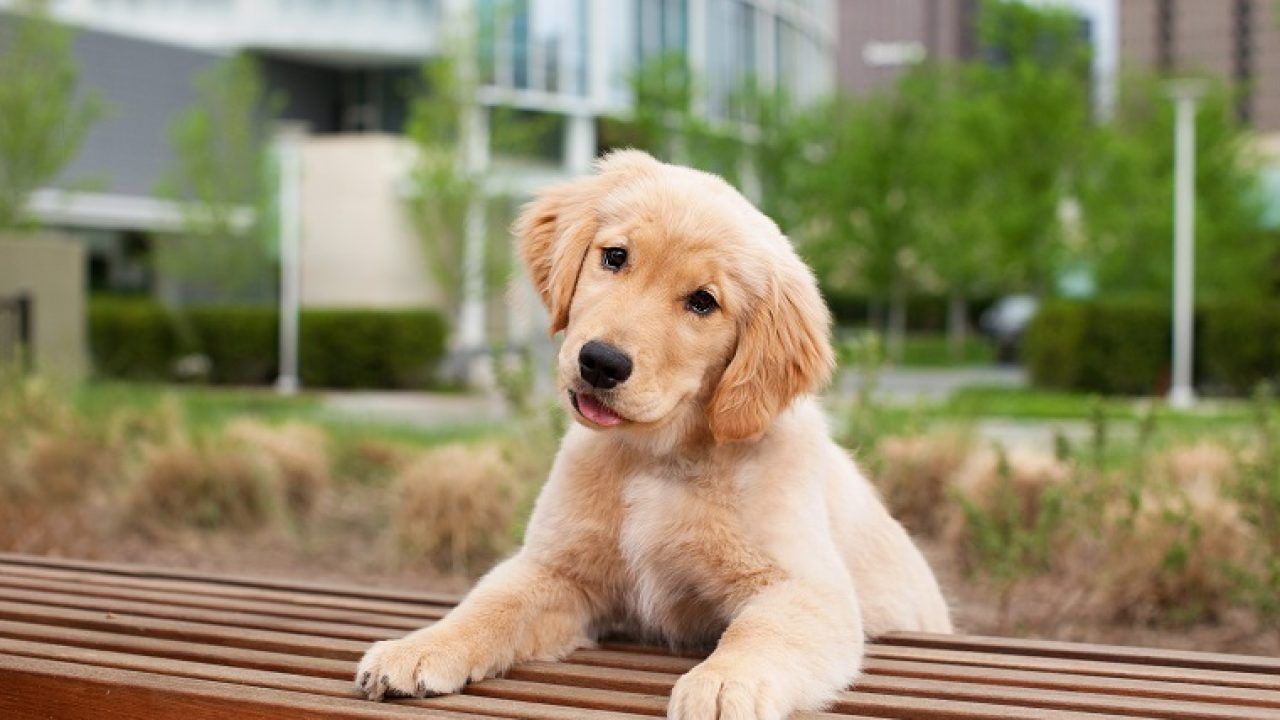Dog owners know 4th of July is a scary time for pups, but it’s lesser-known that Halloween can be just as spooky. Whether it’s costumes we humiliate them with, or treats they can see but may not touch, it hardly qualifies as a holiday as far as your dog is concerned. And that ringing doorbell, are you serious? Again!?

Here’s 5 tips to help make Halloween more tolerable to (and safe for!) your four legged kids, and less stressful for you, too.
1. Trick-or-treat candies are not for pets.
Candy is meant to attract, and it does. Candy isn't good for dogs, and can actually be deadly. Still, dogs will likely eat whatever candy they can get their paws on. And because they can't unwrap it, they'll gobble up the wrapper too.
Chocolate – but most especially baking or dark chocolate – can be dangerous, even lethal, for dogs and cats. Symptoms of chocolate poisoning may include vomiting, diarrhea, rapid breathing, increased heart rate, and seizures. Fatty chocolate and candies can also predispose dogs to pancreatitis. Raisins and nuts can also be highly dangerous if ingested.
Halloween candies containing the artificial sweetener xylitol can also be poisonous to dogs. Even small amounts of xylitol can cause a sudden drop in blood sugar and subsequent loss of coordination and seizures. And the wrappers, string, sticks that accompanied the candy may cause a blockage that requires medical attention.
If your dog snatches a candy or two, depending on the size, it's probably not cause for a trip to the emergency vet, but if s/he gets into a big bag, s/he may end up in the hospital.
2. Keep pets confined, inside, and away from the front door.
Remember to see it from your pet’s point of view: strangers will be ringing the doorbell nonstop, the door is opening and closing often, small beings are dressed in unusual costumes with masks...
Streams of visitors and associated noise can be stressful and confusing to a dog; his or her protective instinct is over-triggered. Reactive behaviors could range from fear, anxiety, aggression, escape attempts, which are likely to be successful due to the frequently opening door.
If you know your dog is nervous, keep him or her contained in a part of the house that's as far as possible from the action. Even a normally calm dog may be overwhelmed by the activity and prefer to be contained in a secure environment. This also prevents your dog from getting out and getting lost.
3. Don't keep (lit) pumpkins around dogs.
Should they get too close, they run the risk of burning themselves or knocking it over and causing a fire. As an alternative, consider battery operated or electric candles. Also, although they are relatively nontoxic, pumpkins can induce gastrointestinal upset if ingested by your dog in large quantities.
4. Don't dress your pet in a costume unless you know they'll love it.
If you decide that your dog *needs* a costume, make sure it isn't annoying or unsafe. It should not constrict movement, hearing, or the ability to breathe or bark. Try on pet costumes before the ‘big night’, and if they seem distressed, allergic, or show abnormal behavior, consider letting them go in their birthday suit. Perhaps a festive bandana will do the trick.
5. IDs, please!
If your dog should escape and become lost, having the proper identification will obviously increase the chances that they will be returned. Make sure your Fi Collar is fully charged so you’re notified if they leave, and their ID tags are up to date in the event a trick-or-treating family finds your pup before you do!

